
Photography has always been an interest of mine, especially the old, black-and-white photos that bring the past to life. While historical sources are often charged with biases, photography can depict the past through a clearer picture. There is no better example than the evolving city of Montreal. The endless summertime construction prompts us to believe that the city must be completely different from its foundation. But the beauty of the past is still present, and it can be commemorated through today’s photography. By comparing old and new images of Montreal, one can see the preservation as well as the evolution of the city over the years.
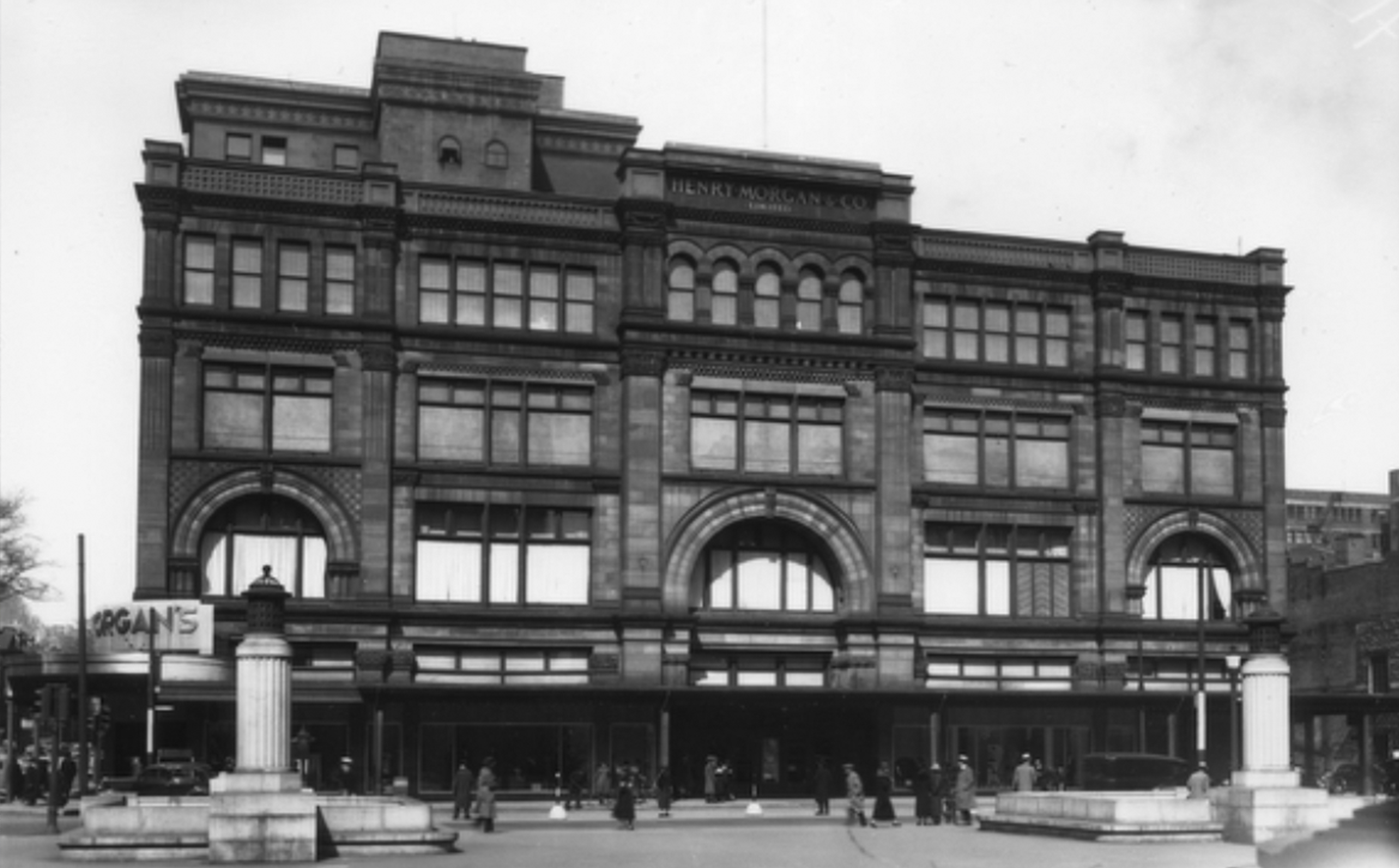
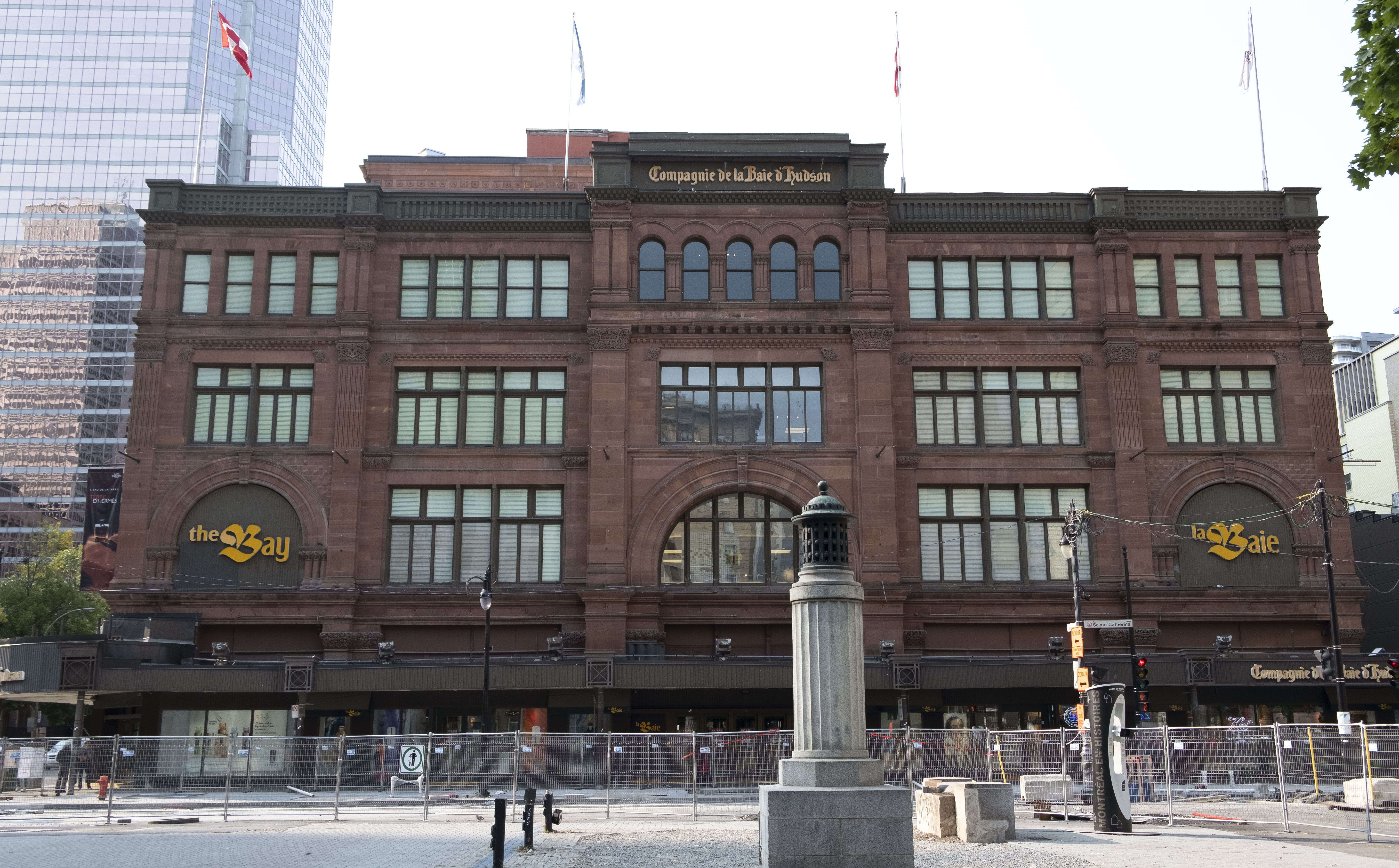
Today’s downtown Hudson’s Bay department store, located on the corner of Union Avenue and St. Catherine Street was originally another store,
Henry Morgan & Co.
Construction for the building started in 1891 under the supervision of John Pierce Hill, who also designed the
Wells Richardson Building
on de la Montagne Street. Development of the
“Richardson Romanesque”
style building cost $400,000— the equivalent of over $10 million in today’s currency. In 1921, an eight-story addition was added to Morgan’s on the northern corner of St. Catherine. Three decades later in 1952, the store overtook Steinberg’s grocery store for a side entrance on Union Avenue. A third and final extension of the building took place in the 1960s on the stretch of land up to Rue de Maisonneuve.
Today, the building colloquially known as “The Bay” is an iconic representation of Montreal’s commercial history. However, construction has yet again altered its appearance, and The Bay is downsizing to only three levels to make room for lofts and tech office spaces. Though the inside will be renovated, the outside and original façade will remain an iconic piece of history and architecture.
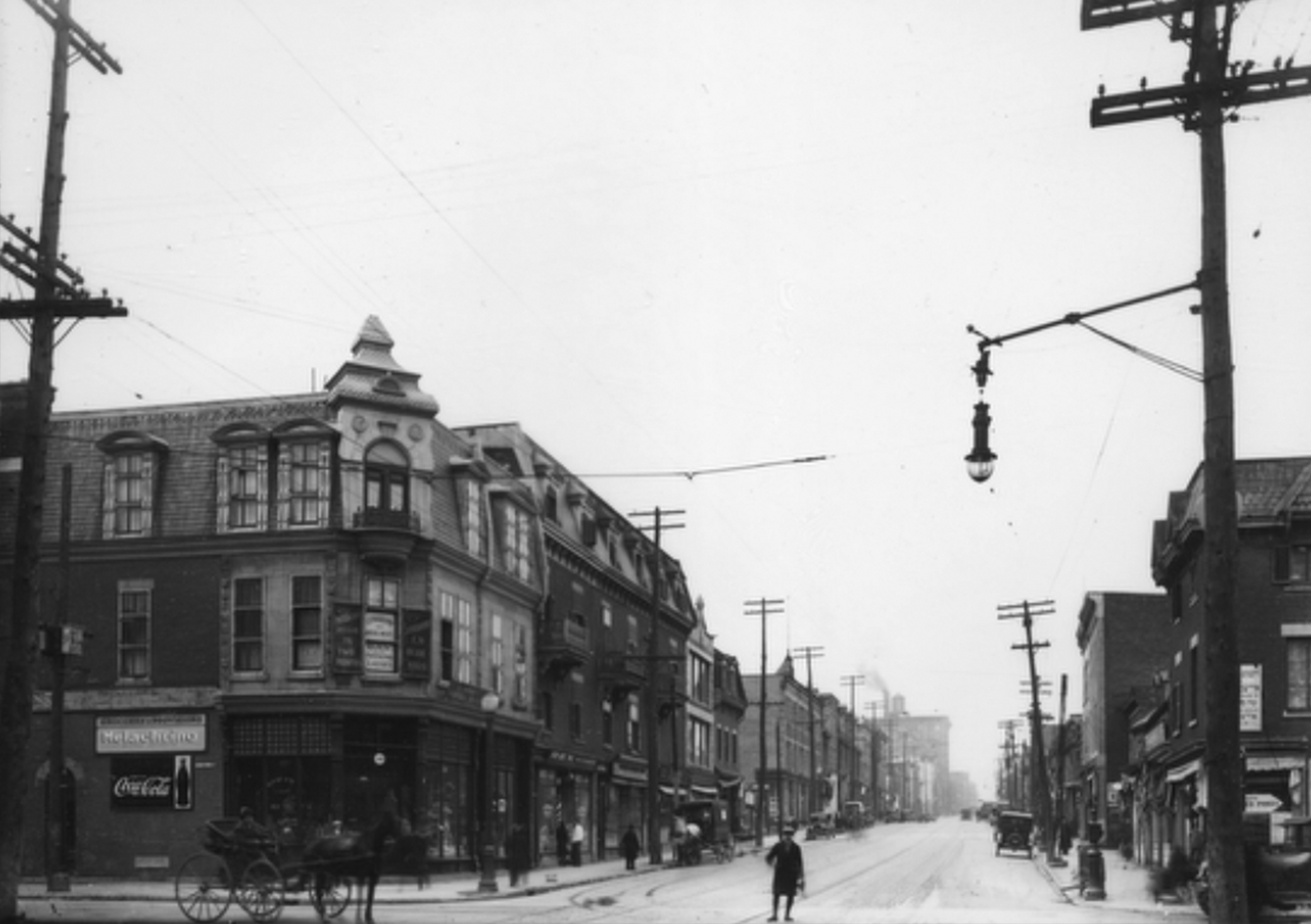
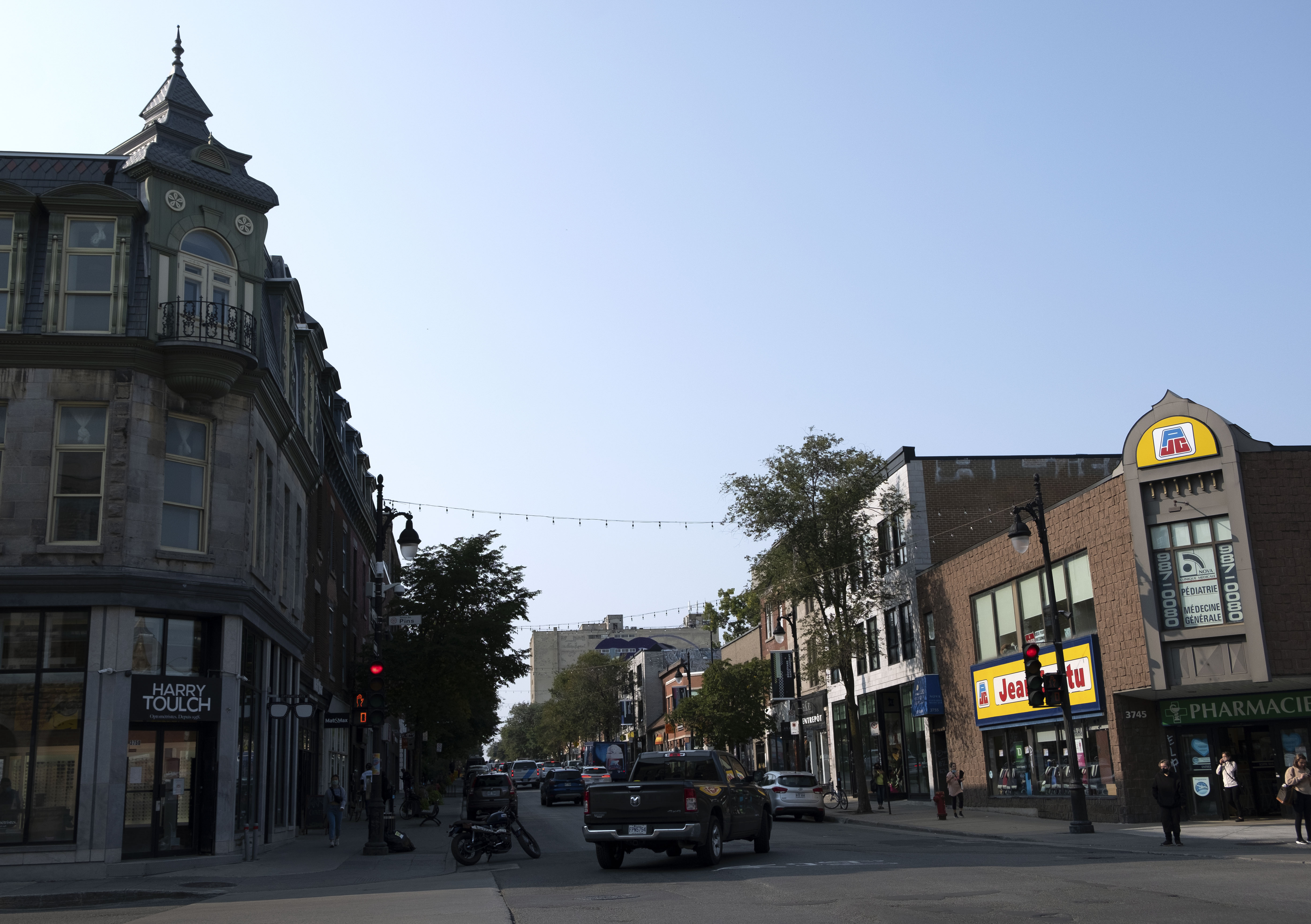
Surprisingly, these two pictures have fewer differences than first meets the eye. The corner of Avenue des Pins and Saint Laurent Boulevard is relatively unchanged in terms of construction, with the unique architectural design on the top of the third story remaining intact today. Newer stores have replaced the old, local shops; however, the outside design remains untouched, preserving the corner’s sense of character despite modern-day drugstore chains and hair salons.
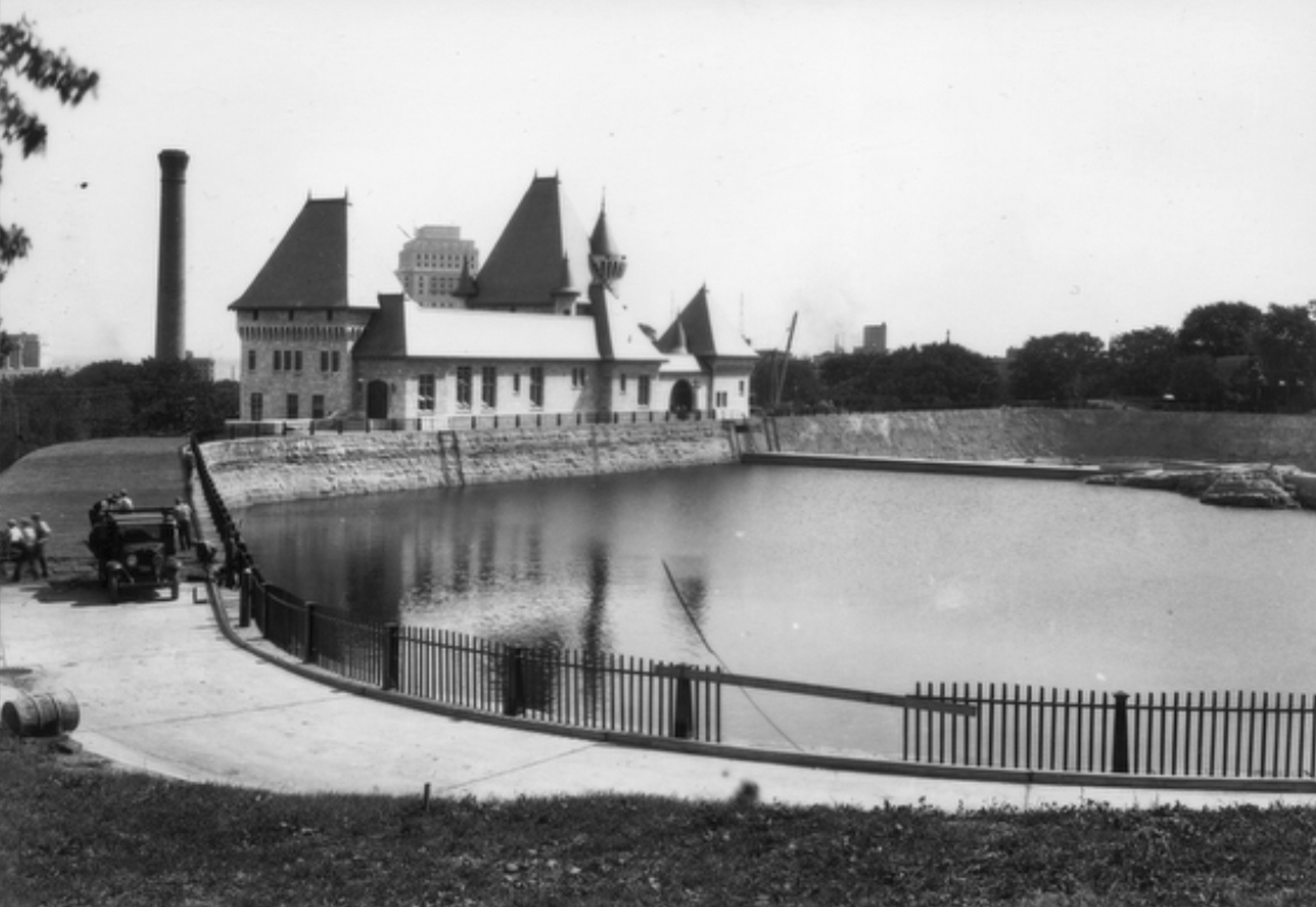
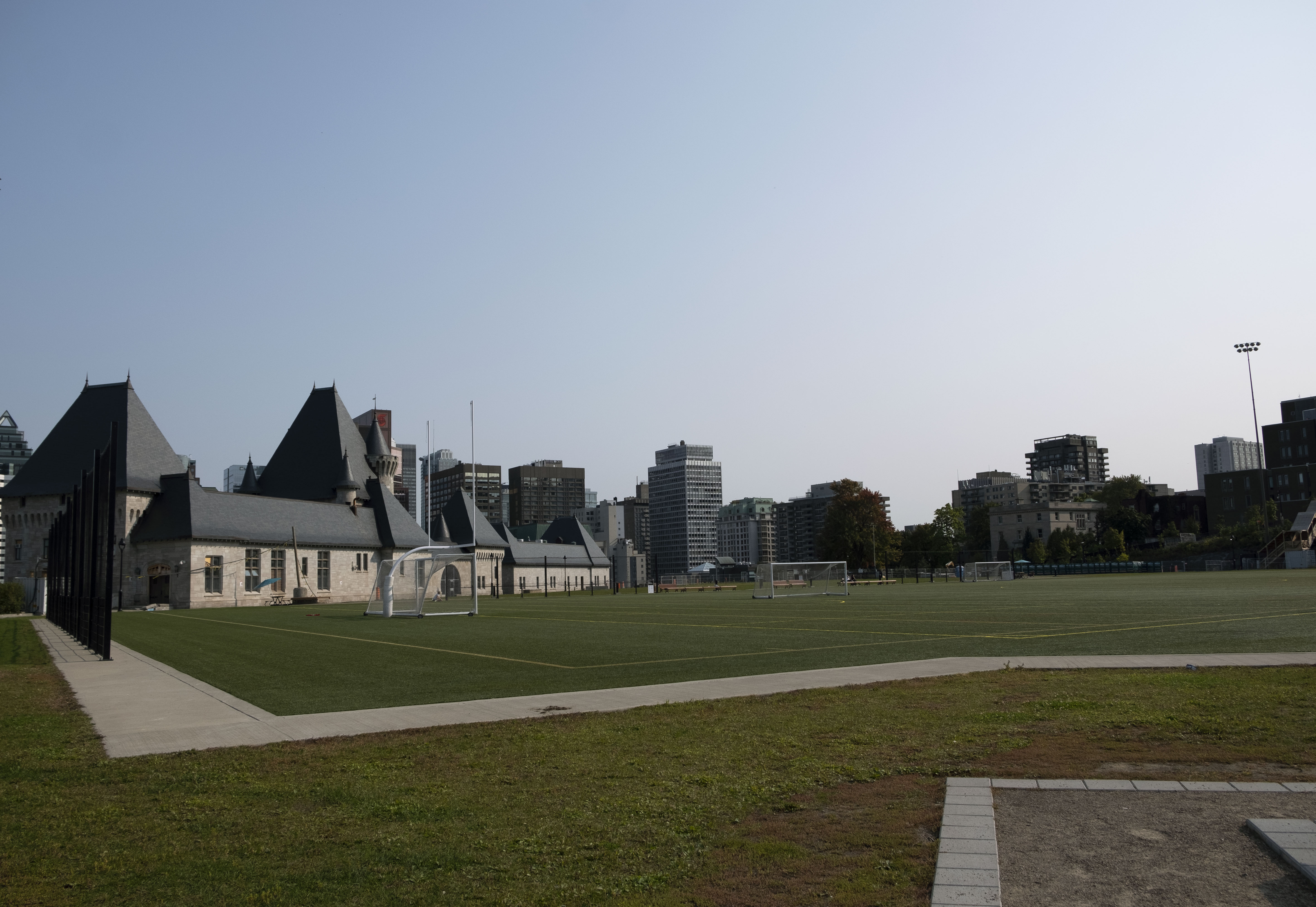
The McTavish Reservoir, as it was originally named, was the city of Montreal’s main water supply for over a century. Initially built as an uncovered reservoir in 1852, the McTavish Reservoir was then covered in 1952 after several incidents of citizens threatening the safety of the drinking water. One incident that gained particular notoriety occured when a man attempted to wash his
dog
in the reservoir in 1907. The reservoir has since functioned as a recreational space and has been occupied almost exclusively by McGill University since the mid-2000s. The purchase of the reservoir by McGill from the city transformed the reservoir through the instalment of soccer pitches with
artificial-turf
fields. While McGill owns the field, it is accessible to the public. Today, the space is known as Rutherford Field or Rutherford Park, named after
Ernest Rutherford,
a Nobel Prize-winning physicist and former McGill University professor.
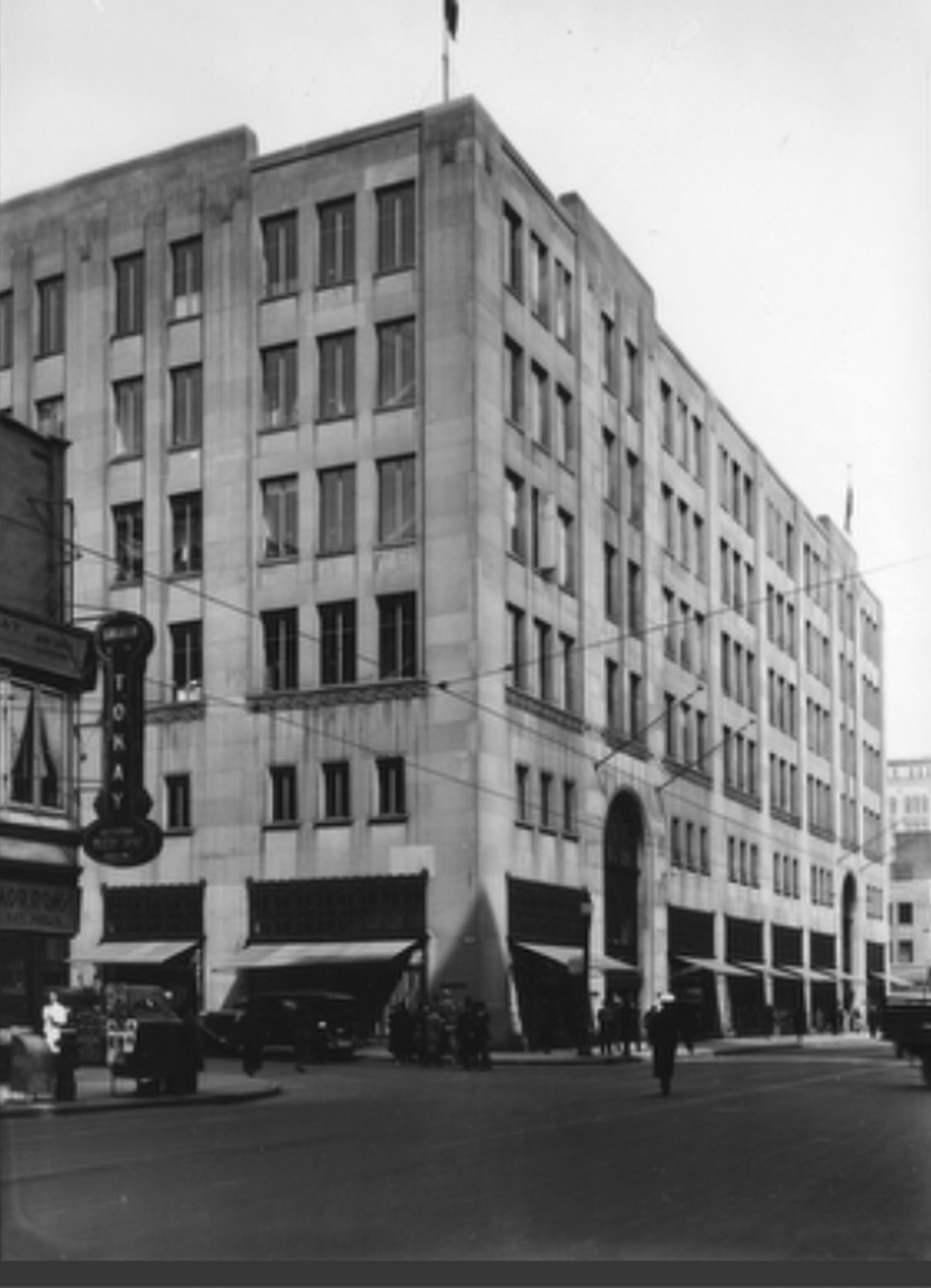
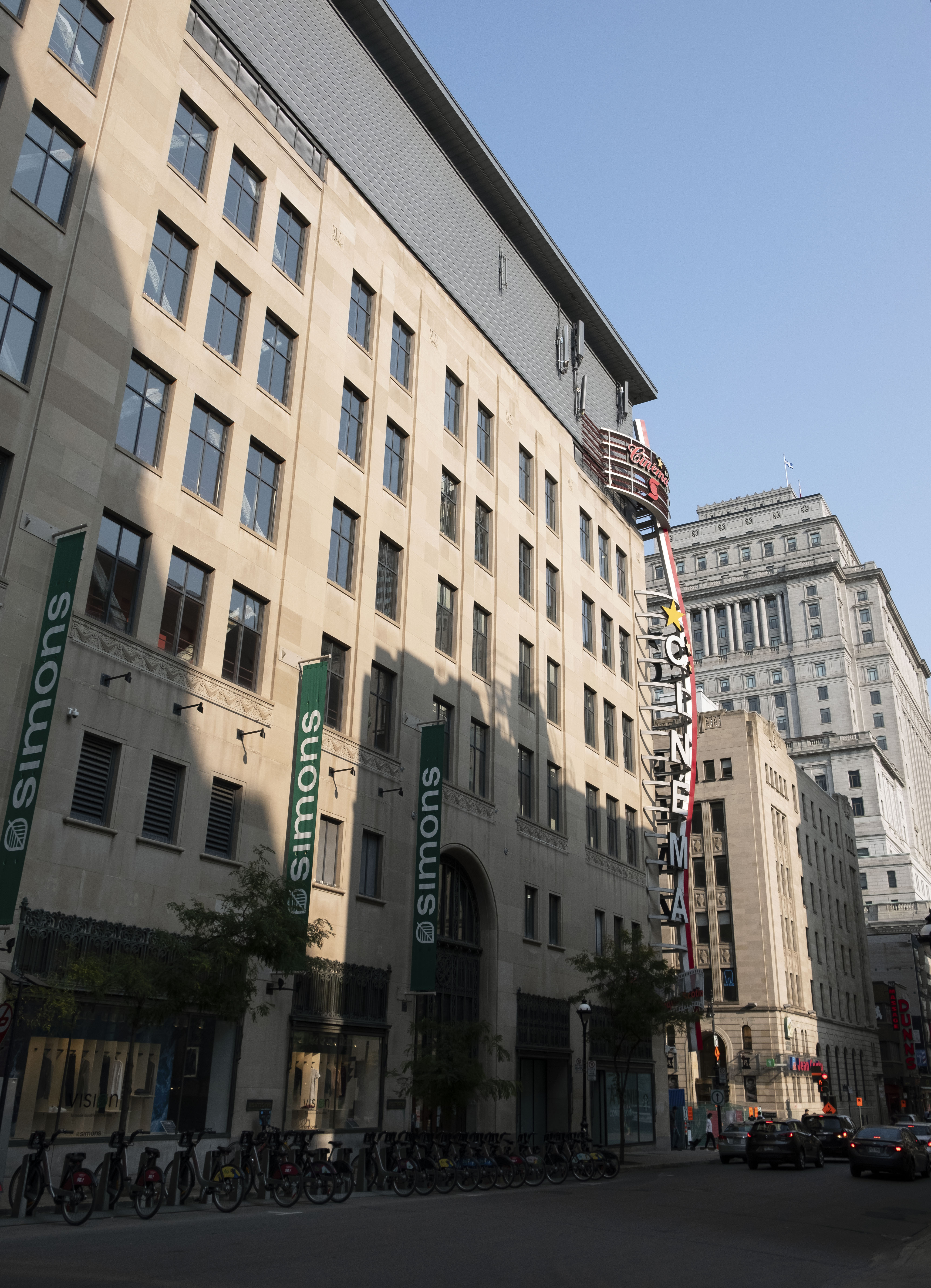
977 St. Catherine Street West used to be the home of the famous
Simpson's
department store, a chain of retail giants founded by Robert Simpson in 1858. The site on St. Catherine Street was built between 1928 and 1930 and later expanded in 1954. The former Simpson’s had seven floors and was known for its detailed façade, ornamented with limestone and bronze embellishment on the windows and arched entrance. Today, this building is the site of a Simon’s store, hinting back to its previous years’ decadence.
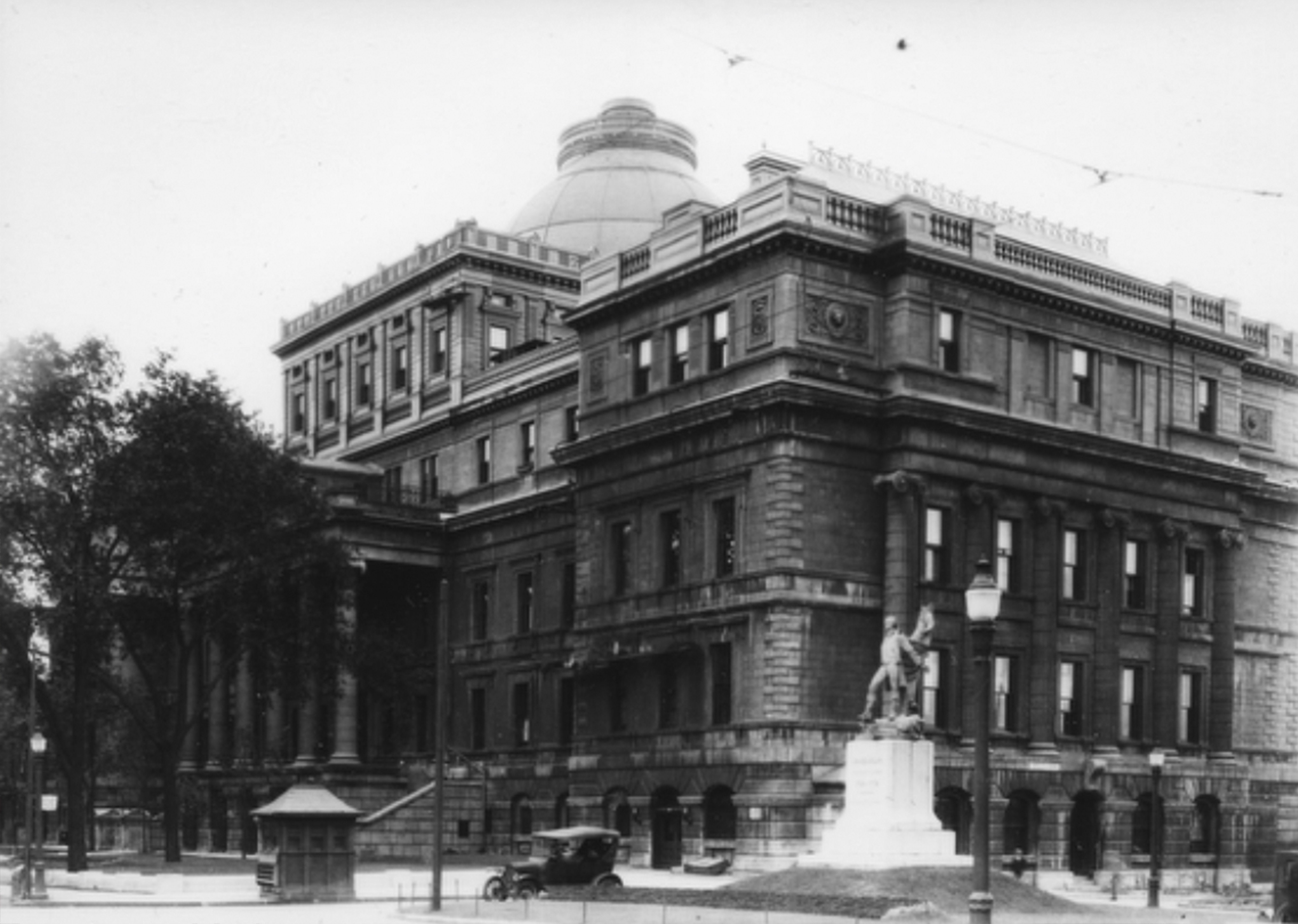
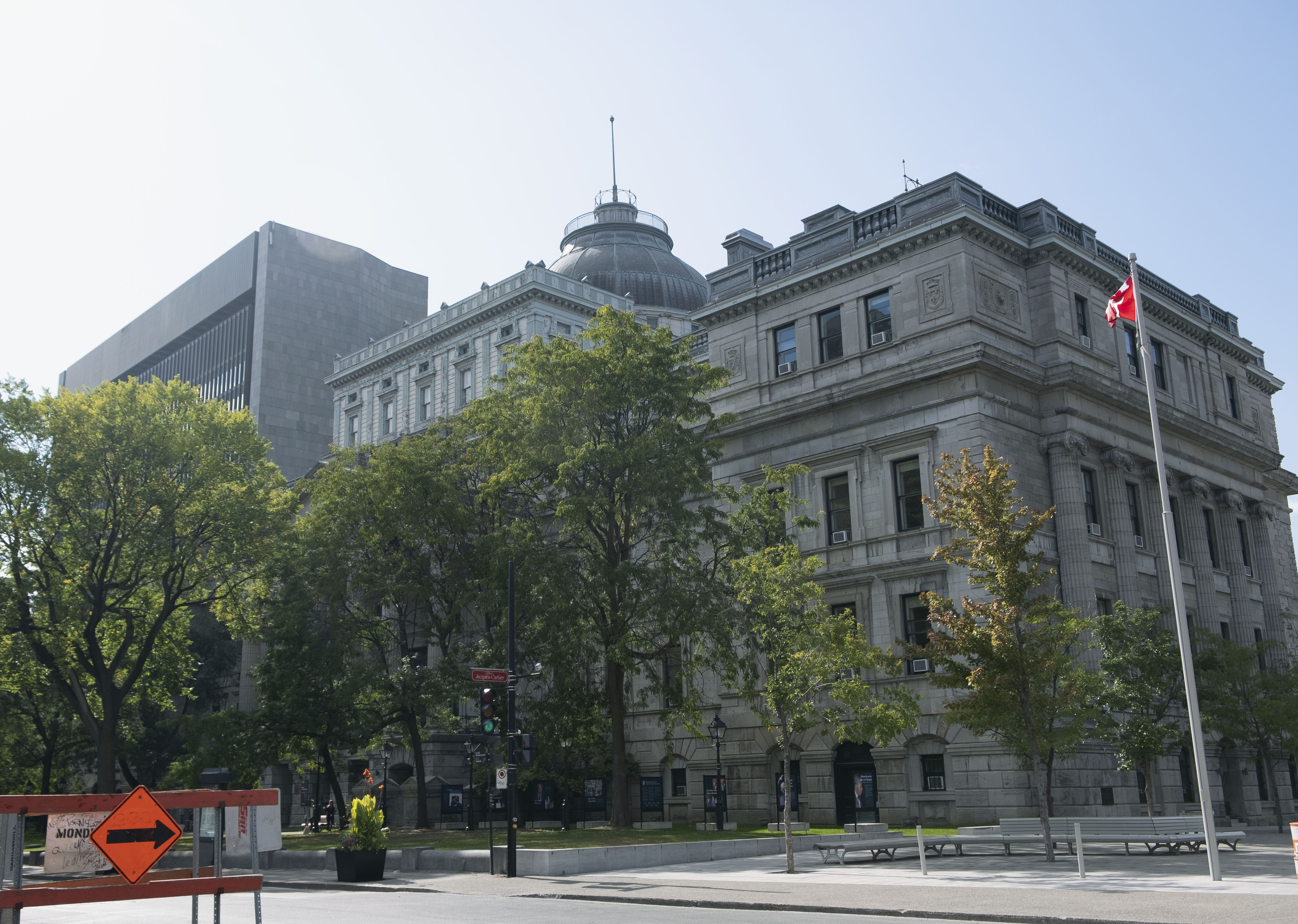
The old Palais de justice, constructed between 1851 and 1857 under the direction of architect John Ostell, was built in the
neoclassical
style, bringing to mind to the ideals of democracy, power, and justice of Ancient Greek and Roman architecture. Situated at 155 Notre-Dame Street East, the building is Montreal’s oldest courthouse. Two smaller wings flank the rectangular, columned entrance on either side, an extension that was added to the building in 1890. A dome sits on top of the original building. As of May 2019, the old Palais de justice has been the site of public and civil services that are usually reserved for
city hall operations
due to the ongoing construction of that building. Nevertheless, the old Palais de justice remains an enduring representation of both democratic processes and architectural history.
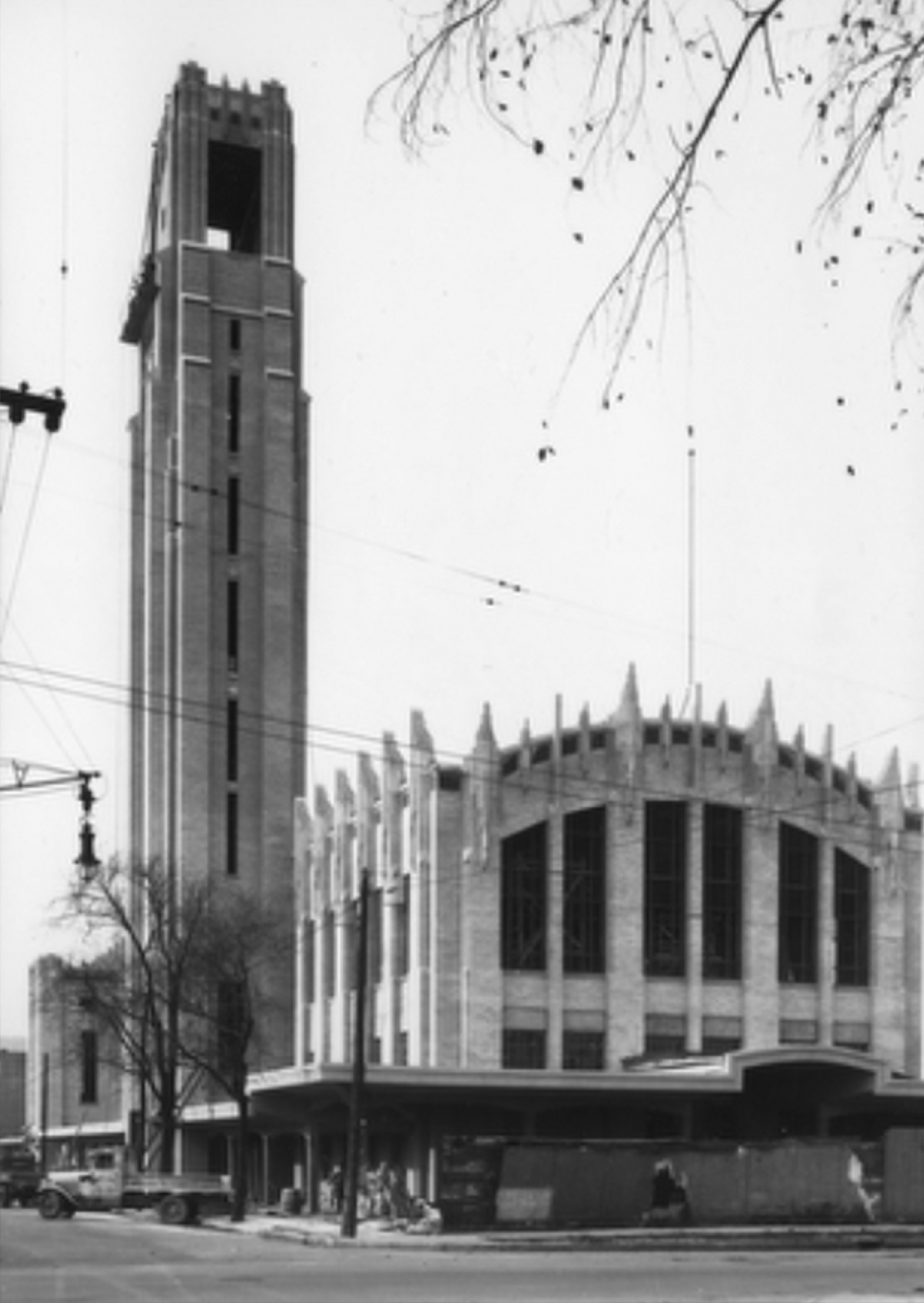
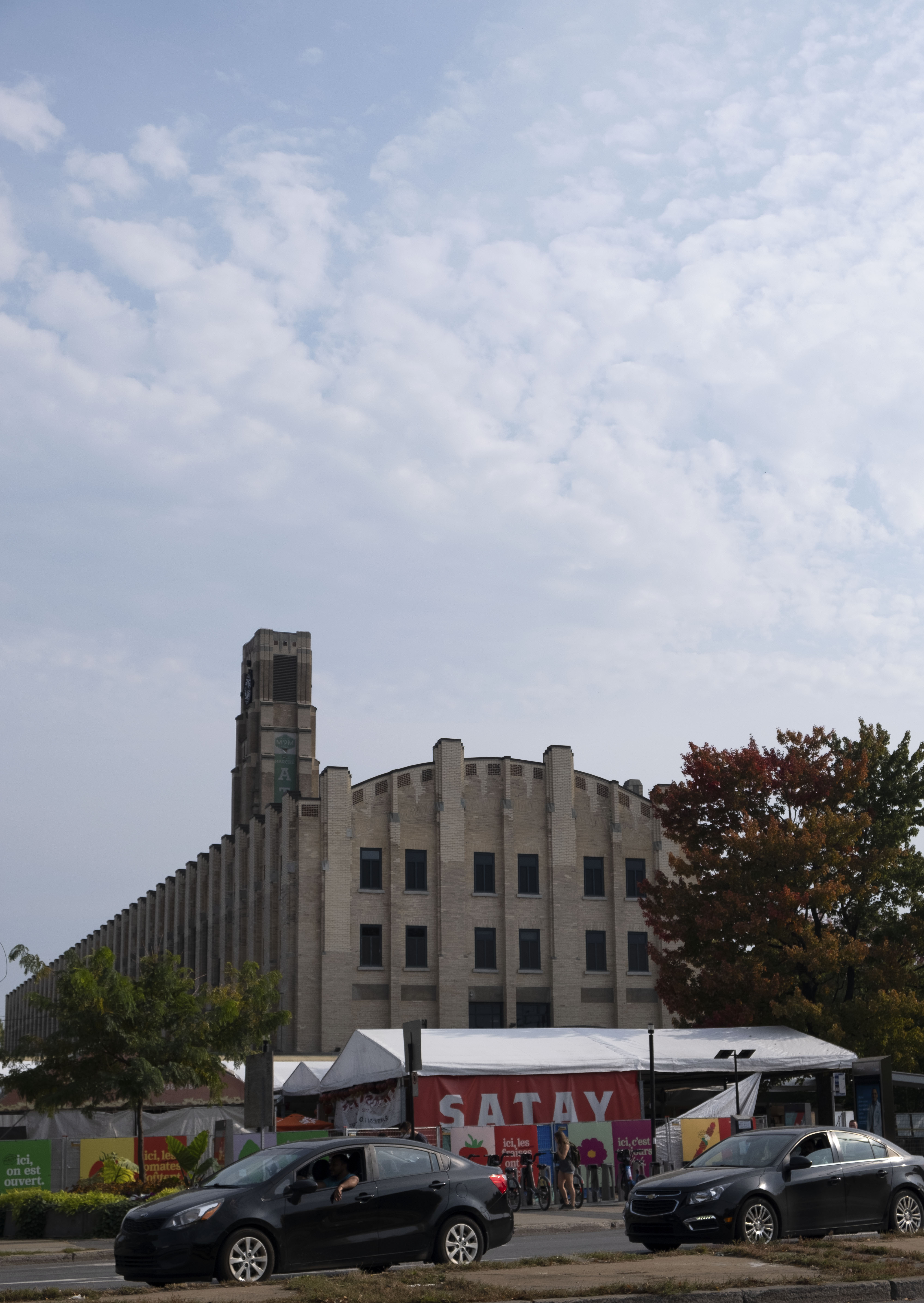
As part of a series of public work projects under the direction of Mayor
Camilien Houde,
the City of Montreal built Atwater Market in 1933 to stimulate the economy during the Great Depression. The site has functioned as both a public market and a place for political, military, social, and sporting
events.
In 1968, the city closed Atwater Market to convert it into a public recreation area; however, the plan for conversion was met with overwhelming public disapproval. Thus, the market reopened in 1982 after extensive renovations, including the addition of a gym and administrative offices. The area surrounding the clock tower of Atwater Market has become a local
landmark,
attracting both Montreal residents as well as tourists, as the market remains a popular place to buy fresh produce and local goods.